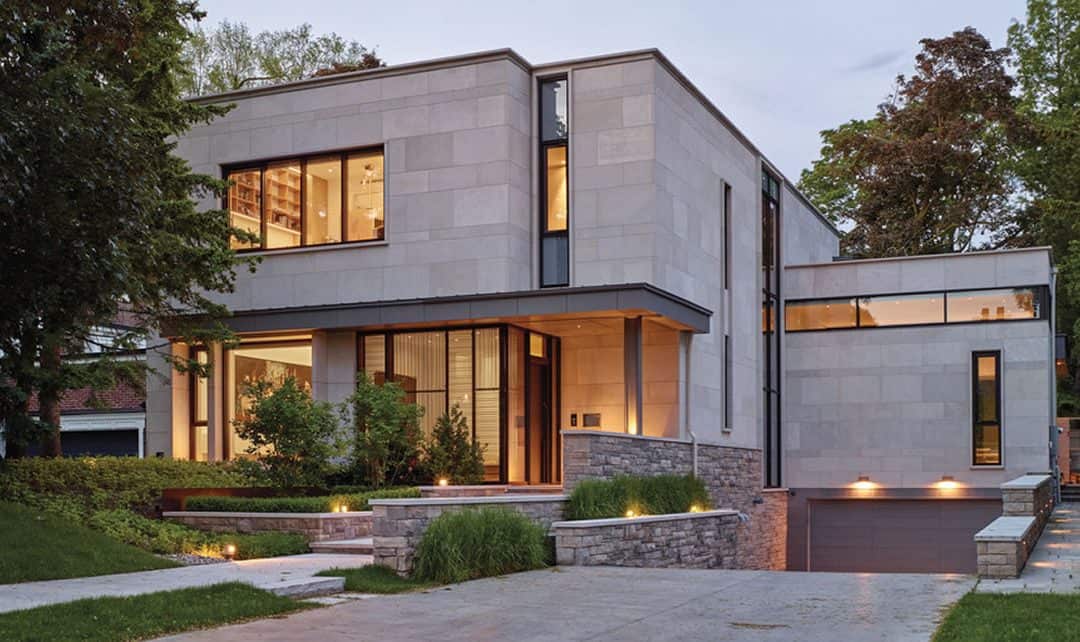Taylor Smyth Architects and Cecconi Simone collaborated on the design of this home in the traditional Toronto neighbourhood of Forest Hill.
Large slabs of Indiana limestone and locally sourced Algonquin rubble stone, both prevalent throughout the neighbourhood, clad the exterior walls and base of the house, tying it into the local vernacular, say the architects. Careful detailing of limestone projections around windows and copings creates subtle relief, producing shades and shadows that break-up the flatness of the walls, a lesson interpreted in a contemporary way from the older surrounding houses.
The 5,700-square-foot house nestles into the landscape. Its Algonquin rubble stone base reappears on the landscape garden walls and sandblasted Algonquin is used for paving and the broad steps leading to the front entrance. At the rear, the same Algonquin clads the back wall of the swimming pool to create a unified composition.
The sophisticated interiors were custom designed by Cecconi Simone to incorporate bronze privacy screens, stone, wood paneling and built-in millwork.
Natural light floods the interior. The dining room is illuminated by a linear skylight along its length and can be opened into the kitchen by a series of pivoting doors to allow it to seat up to 30 people. A 16-foot-high living room with clerestory windows on three sides occupies the back of the house, featuring a continuous wall of glass that looks out onto a covered patio with a deep overhang to provide shading.














